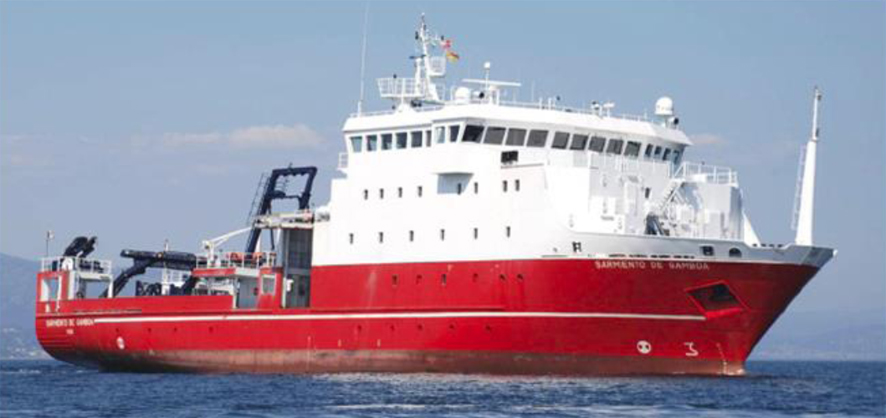Oceanic Response, Controls and Attribution: West Greenland fjord
circulation and accelerating glacier discharge
|
Project Acronym &Title: Oceanic Response, Controls and Area: Uummannaq, West Greenland Research Vessel: RV Sanna, Greenland Institute of Natural Chief scientist:Laura de Steur (NIOZ, NL), Jonathan Nash and Date: 5 July 26-August 13, 2014 (carried out jointly with |
|
|
|
Cruise Map
|
|
Laura de Steur, Royal Netherlands Insitute for Sea Research
|
Main Objectives
| The objective of the programme was to investigate the role of the ocean in controlling the behaviour of two marine-terminating glaciers Rink Isbræ (RI) and Kangerdlugsupp Sermerssua (KS) in central west Greenland. This region is of interest since these two adjacent glaciers terminating in the two fjords show very different behaviour while they reside in a climatological identical region suggesting that the oceanic conditions and forcing may play a role in their different response. The objective was to collect data which allows us to obtain insight in the fjords’ stratification and different water masses, to quantify the heat flux into the fjords and quantify the melt plume from the glaciers… |
Work progress and main achievements
| The surveys that were carried out as part of ORCA consisted of 8 Conductivity-Temperature-Depth (CTD) and Lowered Acoustic Doppler Current Profiler (LADCP) sections to measure the temperature and salinity distribution and the flow field in the fjords. In addition, a tracer sampling program was carried out to obtain oxygen isotope data (∂18O) at 8 target depths in the upper 350 m of the water column. These ∂18O data serve as tracers to identify different freshwater source waters. In each fjord 3 or 4 sections were carried out and one CTD section was done outside the double-fjord system to investigate the far-field boundary conditions. To optimise the research program in this fjords system the ORCA cruise was merged with another planned cruise funded by NASA (UMQ2014) where 5 deep ocean moorings and 2 shallow buoys were recovered, serviced and redeployed and which obtain a continuous time series of temperature, salinity and velocity for a total of two years. The interpretation of these CTD and ∂18O data together with the year-round observations obtained in the two-year mooring program will provide details of the stratification, heat and freshwater fluxes, and freshwater sources, and ultimately provide improved understanding of the fjords’ circulation in each fjord. The newly obtained insights are crucial for predicting future behavior of outlet glaciers in Greenland where an ocean temperature increase of 1.8°C has been projected. |
|
|
ADCP
|
|
|
|
|
For more information: |
 RV Sanna
RV Sanna

 CTD
CTD

